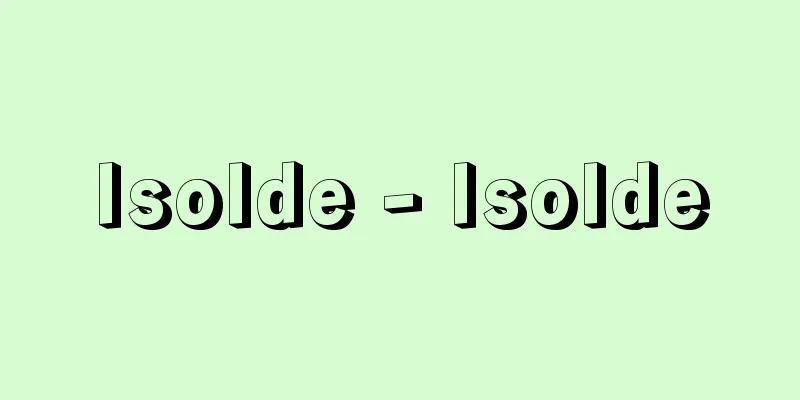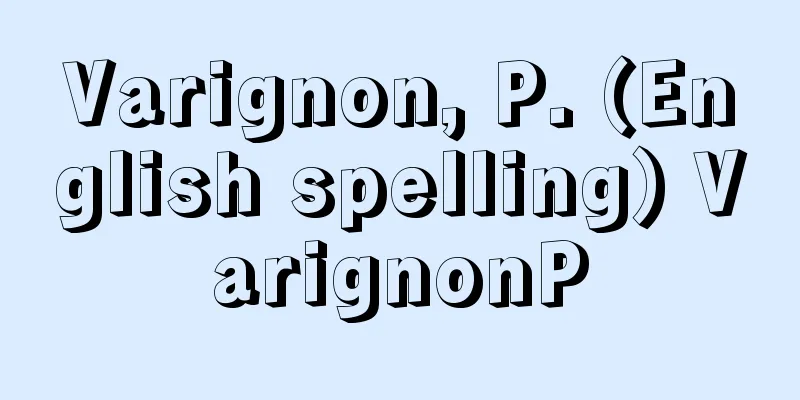Sewage treatment - gesuishori (English spelling)

|
Treatment of sewage to prevent it from polluting public waters such as rivers and lakes, or to make it recyclable. Treatment methods include primary, secondary, and tertiary. (1) Primary treatment: This is a method of removing large solids, suspended solids, oil, sand, etc. Examples include screen sedimentation tanks, grit tanks, and oil-water separators. Although primary treatment may be completed and the wastewater is discharged, it is generally used as a preliminary treatment for secondary and tertiary treatment. (2) Secondary treatment: This is a method of purifying wastewater by chemical or biological treatment methods after removing solids and oil in the primary treatment. Sewerage systems are generally constructed with a focus on biological treatment using activated sludge. (3) Tertiary treatment: This is a treatment method that reduces the amount of organic pollutants in wastewater to 5 to 6 ppm or less. It also significantly reduces the amount of nitrogen and phosphorus, which are the causes of eutrophication. It is called super-high-grade treatment because it is a more advanced treatment method than secondary treatment. There are two methods: treating the water after secondary treatment, and immediately treating the primary treated water. The former is the one that is currently in practical use. It combines reverse osmosis, adsorption onto polymeric compounds such as activated carbon or chelating resin, sand filtration, coagulation sedimentation, and biological treatment, and produces extremely high-quality water that can be recycled. However, it requires two to three times the amount of land and equipment as secondary treatment, and is also expensive. Source: Encyclopaedia Britannica Concise Encyclopedia About Encyclopaedia Britannica Concise Encyclopedia Information |
|
河川や湖沼など公共用水域の汚染源とならないよう,または再生利用ができるように,下水になんらかの処置を施すこと。処理方法によって,1次処理,2次処理,3次処理に分けられる。 (1) 1次処理 大型の固形物,浮遊物,油分,砂などを除去する処理法。スクリーン沈殿池,沈砂池,油水分離槽,などがある。1次処理を終って放水する場合もあるが,一般には,2次処理,3次処理の予備的な処理として利用される場合が多い。 (2) 2次処理 1次処理により固形物,油分などを除いたあと,化学的処理法,生物学的処理法などで排水を浄化する方法。下水道は,一般に活性汚泥による生物学的処理法を中心にして組立てられる。 (3) 3次処理 排水に含まれる有機汚濁物質の量を5~6ppm程度以下に削減する処理方法。富栄養化の原因である窒素,リンの量も大幅に低下させる。2次処理よりもさらに程度の高い処理法なので,超高級処理といわれる。2次処理後に処理する方法,1次処理水をただちに処理する方法があるが,現在実用化されているのは前者である。逆浸透法,活性炭あるいはキレート樹脂などの高分子化合物への吸着法,砂ろ過,凝集沈殿,生物学的処理などを組合せて行うもので,きわめて良質の水が得られ,リサイクルに利用することができるが,2次処理の2~3倍の敷地,設備,さらにコスト高の問題がある。
出典 ブリタニカ国際大百科事典 小項目事典ブリタニカ国際大百科事典 小項目事典について 情報 |
<<: Sewerage - Gesuido (English spelling)
>>: Sewage sludge - gesui o dei
Recommend
Duke of Buckingham - Buckingham
A favorite of King James I of England. His tyranny...
Cerebral palsy - Nouseimahii (English spelling) Cerebral palsy
What is the disease? It refers to "abnormali...
Barhebraeus
…Jacobitic Christian theologian, historian, and p...
Kai Tak Airport
…It is managed by the Ministry of Transport. Kai ...
Shitennoji Temple
The head temple of the Japanese sect, located in S...
Bell inscription incident
The direct cause of the Winter Siege of Osaka was...
Ensemble (Clothing) - Ensemble
A set of clothing made with uniform fabric, color,...
Christmas cactus
...It has no leaves, a jointed stem, and is flat ...
Sakura shrimp (Sakura ebi) - Sergia lucens
A small shrimp belonging to the family Primacidae ...
Jungi Conference
An expanded meeting of the Central Politburo of t...
Maratha Confederacy - Maratha Confederacy
A federation of feudal lords formed around the chi...
View of theatre
…Broadly speaking, it means a general view of dra...
Chang Hoon - Chou Kun
A soldier of the Beiyang warlords in China. Born ...
Payment method - Nousengata
A private group that was a vassal of the Mandokor...
Baion
…Dance music that originated in northeastern Braz...









